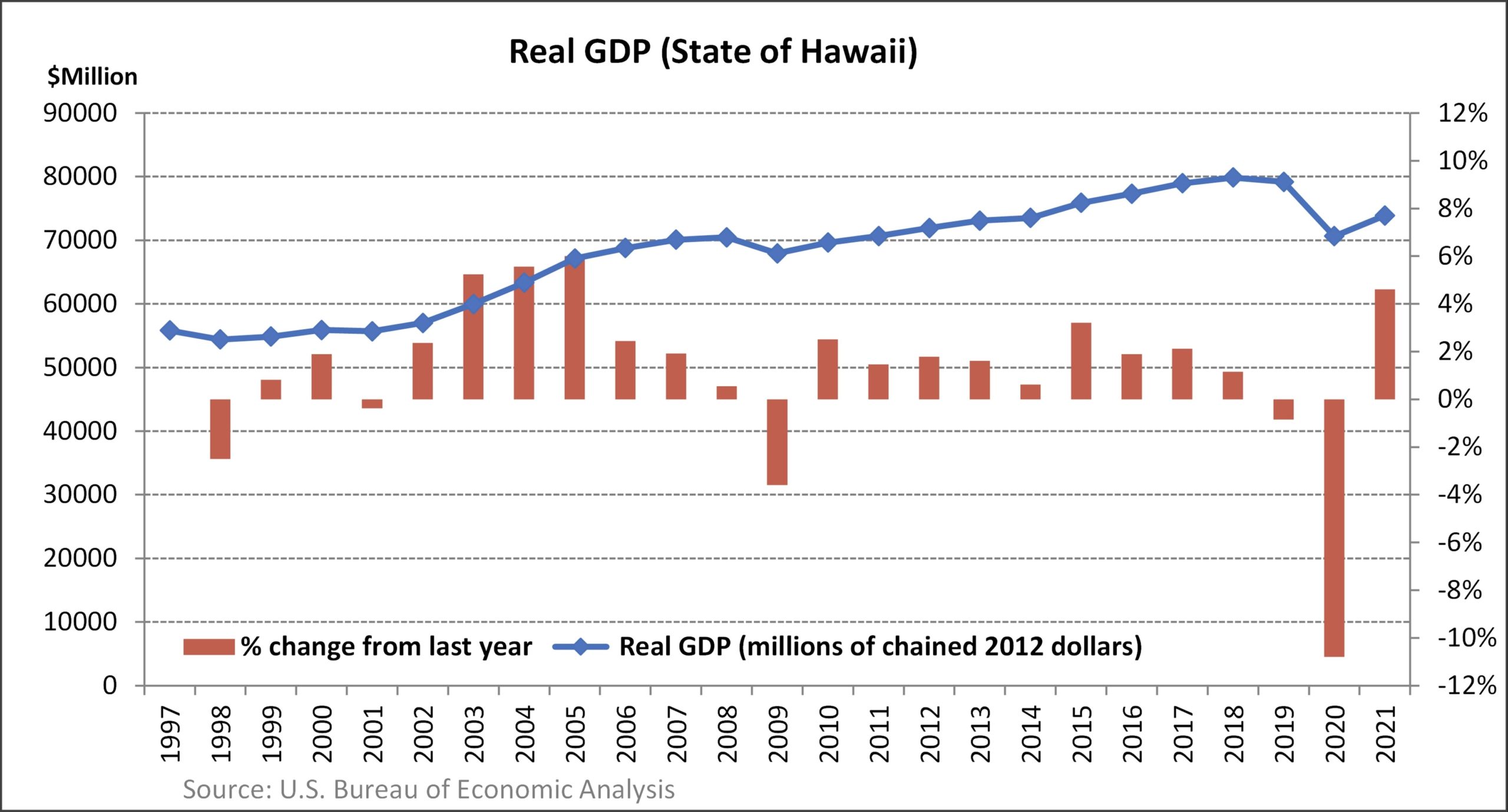
Hawaii’s economy is relatively small and ranks low among U.S. states in terms of personal income, farm products sold, value of manufacturing shipments, retail sales, and bank deposits. The state’s insularity and dependence on imports contribute to its high cost of living. The cost of housing is disproportionately high compared to many mainland states, and building materials are expensive. However, Hawaii’s economy has gradually diversified since the mid-20th century, with tourism and military defense becoming the two largest sectors.
Agriculture is a major component of Hawaii’s economy. Sugarcane and pineapple production have decreased as the world market for them has been changed by lower labor costs in other pineapple- and sugarcane-producing places such as the Philippines. However, food plants grown commercially or in backyards for home consumption include sugarcane, pineapple, papaya, banana, mango, guava, litchi, coconut, avocado, breadfruit, lime, passion fruit, taro, and tamarind. Nearly all varieties of common garden vegetables are raised on the islands, and flowers abound year-round. Since the early 2000s, there has been a slow but steady growth of diversified crops, including coffee, macadamia nuts, ginger root, and seed crops. Livestock raising, together with some lumbering and commercial fishing, are other important sources of income. Nearly half of the commercial fish catch is tuna, especially yellowfin.
Hawaii’s tourism industry is one of the largest in the state, with visitors spending over $17 billion in 2019. The industry provides jobs for over 200,000 people, making it the largest employer in the state. The military is also a significant contributor to Hawaii’s economy, with the U.S. Department of Defense being the state’s largest employer. The military presence in Hawaii includes the U.S. Pacific Command, which is responsible for all U.S. military operations in the Asia-Pacific region.
In conclusion, Hawaii’s economy is relatively small and ranks low among U.S. states in terms of personal income, farm products sold, value of manufacturing shipments, retail sales, and bank deposits. However, the state’s economy has gradually diversified since the mid-20th century, with tourism and military defense becoming the two largest sectors. Agriculture is also a major component of Hawaii’s economy, with livestock raising, lumbering, and commercial fishing being other important sources of income. Hawaii’s high cost of living is largely due to its insularity and dependence on imports..
